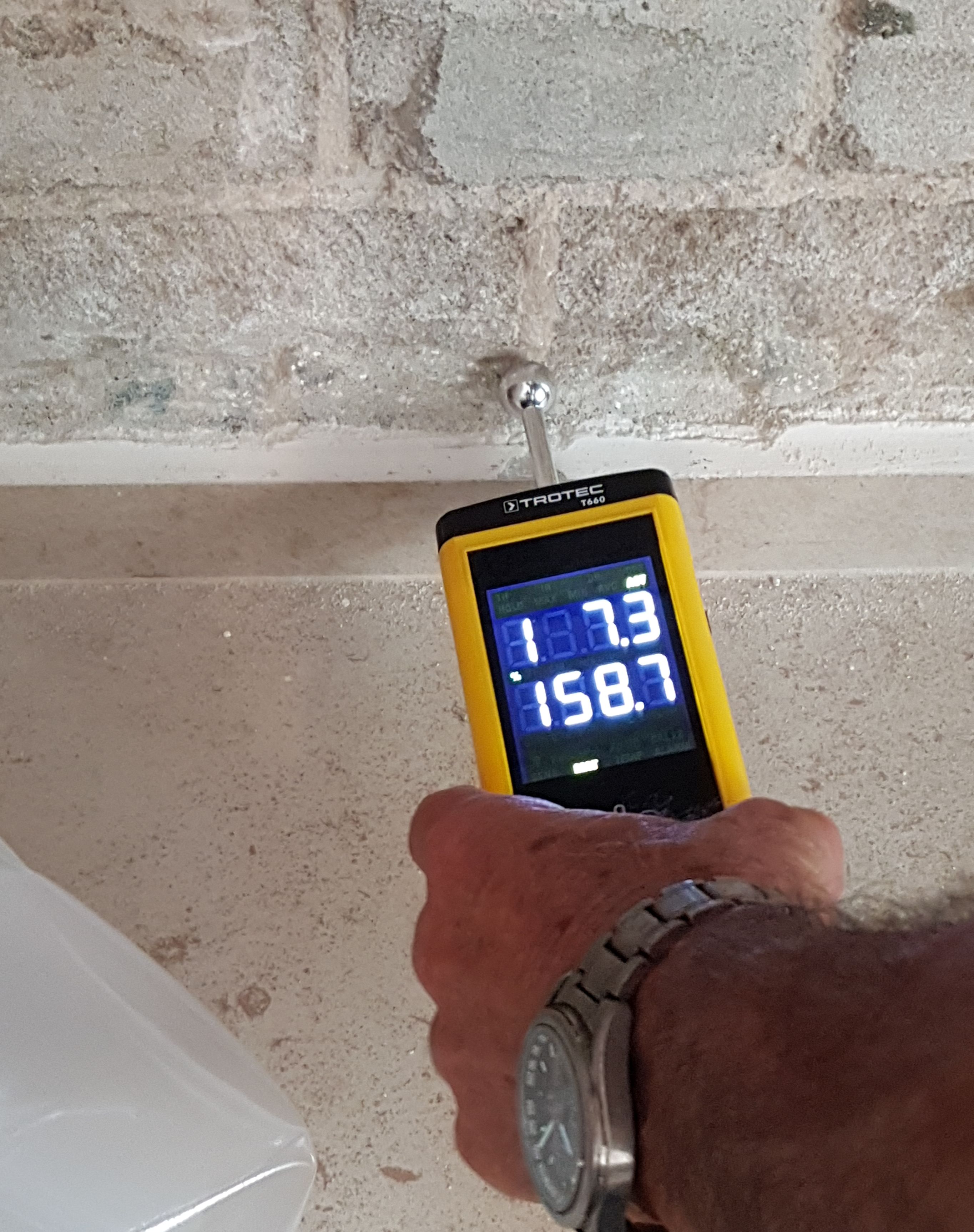Comprehending the Various Kinds Of Moisture Meters and Their Applications
Comprehending the Various Kinds Of Moisture Meters and Their Applications
Blog Article
Look Into the Globe of Moisture Meters: Every Little Thing You Required to Know
In the world of wetness meters exists a globe of accuracy and practicality that frequently goes unnoticed. Understanding just how moisture meters run, the various types offered, and their varied uses can shed light on their value in ensuring top quality and effectiveness.
Just How Moisture Meters Work
Moisture meters operate by gauging the electrical conductivity or capacitance of products to figure out the dampness material present. These meters are vital tools throughout various markets, consisting of agriculture, woodworking, and building. By using various methods such as pinless or pin-type modern technology, moisture meters supply exact analyses that assist specialists make informed choices.
Pin-type dampness meters function by putting the sharp pins right into the material being evaluated. On the other hand, pinless wetness meters use electromagnetic signals to scan a bigger location without creating any type of damage to the material's surface.
Despite the approach made use of, wetness meters play a critical function in stopping concerns such as mold growth, structural damage, or item defects triggered by excess wetness. Recognizing how these meters work is vital for guaranteeing the high quality and stability of products in different applications.
Kinds Of Moisture Meters
Given the essential duty dampness meters play in numerous markets, it is necessary to comprehend the different types readily available to specialists for properly analyzing wetness levels - Moisture Meter. There are mainly 2 main sorts of dampness meters: pinless and pin-type wetness meters

On the various other hand, pinless moisture meters use electromagnetic sensor plates to scan a larger area of the material without creating any kind of damage. This type is suitable for quickly scanning large locations and is commonly utilized for floor covering, wall surfaces, and ceilings. Pinless meters are practical for taking analyses on finished surfaces without leaving any noticeable marks.
Both sorts of dampness meters have their benefits and are selected based on the specific requirements of the work handy. Recognizing the distinctions between these types is essential for professionals to make accurate dampness analyses.
Applications Across Industries
With diverse functionalities, dampness meters locate extensive application across various sectors, helping professionals in guaranteeing optimum conditions for materials and frameworks. In the farming market, wetness meters are indispensable for identifying the dampness web content in grains, seeds, and hay, making sure quality assurance and protecting against mold development. Building specialists rely upon moisture meters to analyze the wetness levels in building products like drywall, wood, and concrete, which is crucial for preserving structural stability and preventing problems like rot or mold and mildew. The flooring market makes use of moisture meters to determine the moisture material in subfloors prior to installing different flooring coverings, stopping costly problems due to excess wetness. In the food sector, moisture meters are used to keep an eye on and regulate moisture degrees in products such as grains, nuts, and dried fruits to maintain quality and top quality. In addition, dampness meters play a vital role in the remediation and damages analysis sector by aiding specialists recognize and address water damage in buildings quickly. Across these diverse sectors, dampness meters are crucial click tools for ensuring the quality, safety and security, and long life of different materials and products.
Tips for Utilizing Wetness Meters
When determining the dampness content in different products,Utilize the wetness meter's calibration setups to ensure precise analyses. Calibration is critical for the appropriate performance of a moisture meter. Before each usage, it is suggested to check and adjust the calibration settings according to the details product being tested. Additionally, make certain the meter is established to the proper moisture range for the material you are determining to acquire one of the most specific outcomes.
When using a pin-type dampness meter, put the pins to the ideal deepness suggested for the material being evaluated. This guarantees that the moisture readings are taken from the correct deepness within the product, supplying a much more accurate depiction of its dampness material. For pinless moisture meters, remember to keep appropriate contact with the material's surface area to obtain trusted analyses.
On a regular basis examine and change the batteries in your wetness meter to avoid inaccurate analyses due to low power. Shop the meter in a completely dry and risk-free area when not being used to extend its life-span and maintain its precision. By adhering to these suggestions, you can make the most of the efficiency of your moisture meter and acquire precise wetness web content measurements throughout different materials.
Upkeep and Calibration
To make sure the precision of wetness web content dimensions, normal upkeep and calibration of the dampness meter are essential steps in its proper functioning. Calibration adjusts the moisture meter to ensure that it provides consistent and dependable results.
Calibration ought to be carried out regularly, especially if the moisture meter is used regularly or in critical applications where specific dimensions are called for. Lots of wetness meters include calibration tools or can be adjusted by specialist solutions. Moisture Meter. It is suggested to keep a log of calibration days and results to track the efficiency of the wetness meter in time. By calibrating the moisture and keeping meter on a regular basis, individuals can trust the precision of the wetness material measurements gotten.
Verdict

To conclude, moisture meters play a vital role in different sectors by accurately determining the dampness content why not look here of materials. Recognizing how these devices function, the various types available, and appropriate upkeep and calibration are important for acquiring trusted results. Whether in construction, manufacturing, or agriculture, using dampness meters assists make sure top quality control and efficiency in processes.

In conclusion, dampness meters play a crucial role in various sectors by properly gauging the dampness web content of products.
Report this page